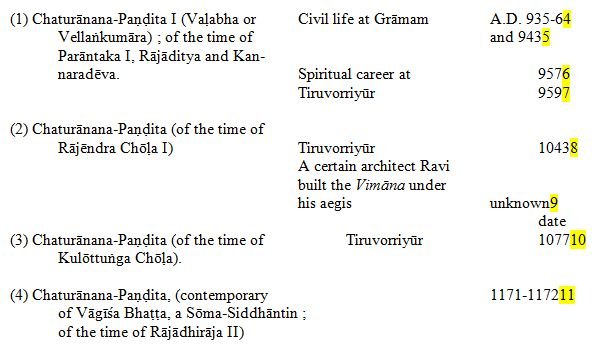|
Contents |
|
Index
|
|
Introduction
|
|
Contents
|
|
List of Plates
|
|
Additions and Corrections
|
|
Images
|
|
Contents |
|
Altekar, A. S
|
Bhattasali, N. K
|
|
Barua, B. M And Chakravarti, Pulin Behari
|
|
Chakravarti, S. N
|
|
Chhabra, B. CH
|
|
Das Gupta
|
|
Desai, P. B
|
|
Gai, G. S
|
|
Garde, M. B
|
|
Ghoshal, R. K
|
|
Gupte, Y. R
|
|
Kedar Nath Sastri
|
|
Khare, G. H
|
|
Krishnamacharlu, C. R
|
|
Konow, Sten
|
|
Lakshminarayan Rao, N
|
|
Majumdar, R. C
|
|
Master, Alfred
|
|
Mirashi, V. V
|
|
Mirashi, V. V., And Gupte, Y. R
|
|
Narasimhaswami, H. K
|
|
Nilakanta Sastri And Venkataramayya, M
|
|
Panchamukhi, R. S
|
|
Pandeya, L. P
|
|
Raghavan, V
|
|
Ramadas, G
|
|
Sircar, Dines Chandra
|
|
Somasekhara Sarma
|
|
Subrahmanya Aiyar
|
|
Vats, Madho Sarup
|
|
Venkataramayya, M
|
|
Venkatasubba Ayyar
|
|
Vaidyanathan, K. S
|
|
Vogel, J. Ph
|
|
Index.- By M. Venkataramayya
|
|
Other
South-Indian Inscriptions
|
|
Volume
1
|
Volume
2
|
|
Volume
3
|
Vol.
4 - 8
|
|
Volume 9
|
Volume 10
|
|
Volume 11
|
Volume 12
|
|
Volume 13
|
Volume
14
|
|
Volume 15
|
Volume 16
|
|
Volume 17
|
Volume 18
|
|
Volume
19
|
Volume
20
|
|
Volume 22
Part 1
|
Volume
22
Part 2
|
|
Volume
23
|
Volume
24 |
|
Volume
26
|
Volume 27 |
|
Tiruvarur
|
Darasuram
|
|
Konerirajapuram
|
Tanjavur |
|
Annual Reports 1935-1944
|
Annual Reports 1945- 1947
|
|
Corpus Inscriptionum Indicarum Volume 2, Part 2
|
Corpus Inscriptionum Indicarum Volume 7, Part 3
|
|
Kalachuri-Chedi Era Part 1
|
Kalachuri-Chedi Era Part 2
|
|
Epigraphica Indica
|
Epigraphia Indica Volume 3
|
|
Epigraphia
Indica Volume 4
|
Epigraphia Indica Volume 6
|
|
Epigraphia Indica Volume 7
|
Epigraphia Indica Volume 8
|
|
Epigraphia Indica Volume 27
|
Epigraphia Indica Volume 29
|
|
Epigraphia Indica Volume 30
|
Epigraphia Indica Volume 31
|
|
Epigraphia Indica Volume 32
|
Paramaras Volume 7, Part 2
|
|
Śilāhāras Volume 6, Part 2
|
Vākāṭakas Volume 5
|
|
Early Gupta Inscriptions
|
|
Archaeological
Links
|
|
Archaeological-Survey
of India
|
|
Pudukkottai
|
|
|
EPIGRAPHIA INDICA
TIRUVORRIYUR INSCRIPTION OF CHATURANANA PANDITA
No. 371 of 1911 of the Madras Epigraphical Collection too literally Tiruvorriyūr-uḍaiyār-kōyilil-maḍamuḍaiya Chaturānana Paṇḍitanum─we may suppose that the maṭha was within the temple.1
If, as has been supposed by some scholars,2 Chaturānana had received initiation directly at the
hands of Nirañjana-guru himself, we may expect the text and the wording of the inscription to have
been different. As the wording of the inscription is, it is gahva or guhā that is emphasised and it
is from the guhā (gahvād ya āpta-vrataḥ) that Chaturānana is said to have obtained his spiritual
re-birth. In spirit, therefore, he was a pupil and successor of Nirañjana, but not in person.3
Chaturānana then established a monastery at Tiruvorriyūr whose successive heads came to
be called Chaturānana Paṇḍitas after the founder. The following Chaturānana-Paṇḍitas are
mentioned at Tiruvorriyūr in inscriptions belonging to different periods.

_______________________________________________
[1] There is at present no trace of the Chaturānana-Paṇḍita maṭha at Tiruvorriyūr, either outside or inside
the temple. The maṭha-like hall in the Sannidhi street very near the main gōpura of the temple having an image
of Dakshiṇāmūrti, Śaṅkarāchārya, etc., is a very recent one, owing its origin to an Advaitic Sannyāsin, popularly
known as Yōgīśvara, who was there some decades ago. This has nothing to do with Chaturānana maṭha.
There is also a local tradition in the place that to protect the purity of the priest, there used to be a cave
passage between the priest’s house on the northern main street to the east of the tank and the temple, but
such a passage, if it was there, must have been different from the Nirañjana-Guhā.
[2] T.N. Ramachandran : Vijayakampavarman, JOR, Madras, Vol. VI, pp. 224-235.
[3] Therefore, the whole argument of Mr. T. N. Ramachandran in his article that the Nirañjana-guru of Vijayakaṁpa’s time being the same as the Nirañjana-guru of our inscription, the date of Vijaya-Kaṁpavarman would
come to 907-33 A.D. seems to be wrong. It is unnecessary to assume too long a period for the Nirañjana of
Kaṁpa’s inscription and the Chaturānana of Kannaradēva’s inscription or to identify the latter with the Chaturānana of Rājēndra Chōḷa’s time. Having proposed this last identification, Mr. Ramachandran differentiates
the Chaturānanas of the two Rājēndra inscriptions, while the more natural assumption is to take these two as
the same. It is acceptable to Mr. Ramachandran that the successors of the first Chaturānana-Paṇḍita were
also called by the same name. See also above, Volume XXIII, p. 145, f.n. 1.
[4] No. 739 of 1905 of the Madras Epigraphical Collection.
[5] No. 735 of 1905 of the Madras Epigraphical Collection.
[6]No. 177 of 1912 of the Madras Epigraphical Collection.
[7] No. 181 of 1912 of the Madras Epigraphical Collection.
[8] S. I. I., Vol. V. No. 1354 ; No. 104 of 1912 of the Madras Epigraphical Collection.
[9] No. 126 of 1912 of the Madras Epigraphical Collection.
[10] S. I. I., Vol. V. No. 1356.
[11] Nos. 403 of 1896, 371 of 1911 and 206 of 1912 of the Madras Epigraphical Collection.
|